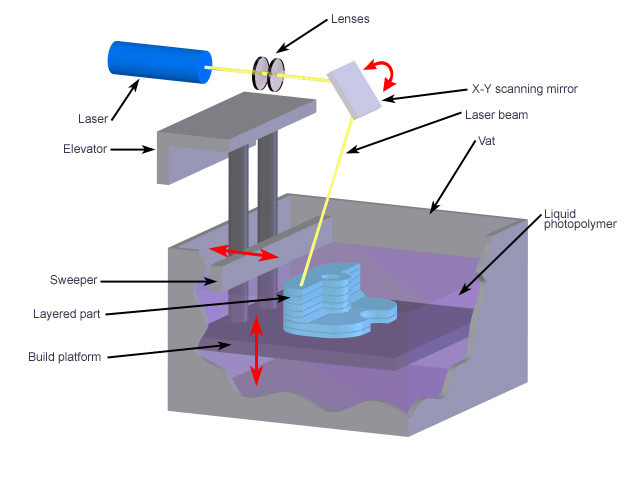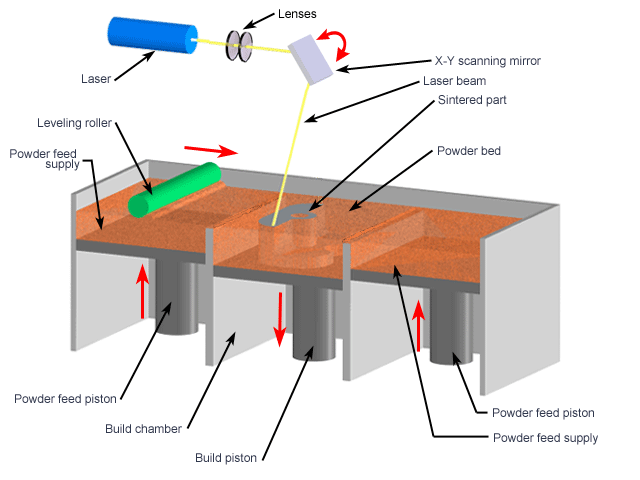
SLA (stereolithography) is an additive manufacturing process which employs liquid photosensitive polymer "resin" and laser light to build the part layer by layer. For each layer, the laser beam scans a cross-section of the part pattern on the liquid resin surface, exposed resin to laser beam cures and meanwhile joins to the layer below. Once one layer finished, the elevator platform descends by a distance equal to thickness of a single layer, typically 0.1 mm. Then, a resin-filled blade sweeps across the cured cross-section of the part and recoat it by a new layer of fresh material to be scanned till finishing the part.
|
|

SLS (Selective Laser Sintering) is another additive manufacturing technique that it is similar to SLA, which uses laser light as the power source to sinter the powdered material in plastic or metal. The laser beam selectively fuses the powder by scanning cross-sections generated from a 3D digital description of the part on the powder bed surface. After one cross-section is scanned and sintered, the powder bed is lowered by one layer thickness, also typically 0.1 mm, then a new layer of powder material is applied on the top surface to repeat this process.
|